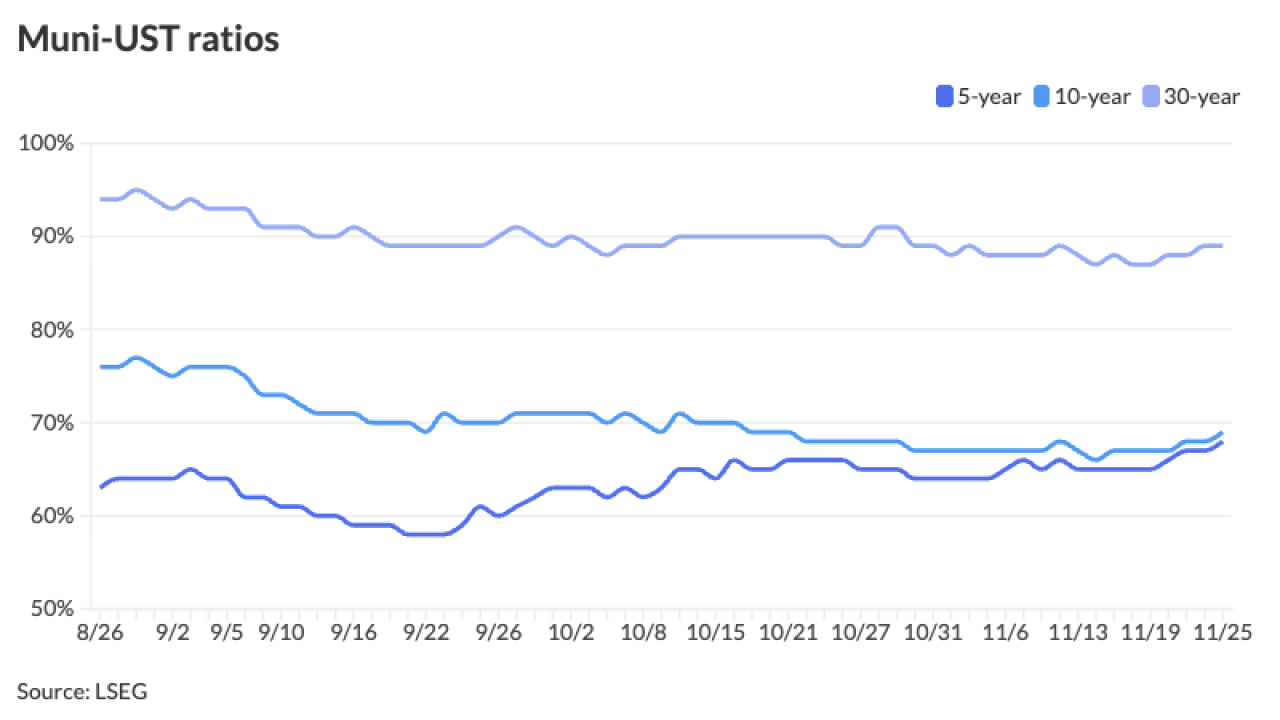
Over the past weeks, the municipal bond market has begun recovering from the turmoil triggered by President Trump's tariff announcements, and as it does so, is more resilient than the day-to-day volatility suggests.
That's the view of Jamie Doffermyre, head of public finance syndicate and origination at Truist Securities, speaking Wednesday at the Bond Buyer's Southeast Public Finance conference in Atlanta.
On "
While there has been some underperformance, "if we think about munis moving in somewhat 50% beta to rates, it's still pretty resilient if you think about what happened in some of those weeks," Doffermyre said.
The 10-year MMD yields "performed even better" at 3.21% on April 2 and closed at 3.31% on Tuesday, 10 basis points wide. Ten-year USTs are 30 basis points wide, he said.
Thirty years followed a similar story. The 30-year MMD yield rose from 4.19% on April 2 to 4.40% yesterday, 21 basis points wider, while 30-year USTs were 40 basis points wide.
"So in the absence of all the news that is surrounding the market, that is a very solid performance, given the fact that we've had several weeks of $14 billion of issuance," Doffermyre said. "So I would say that's a kudos to our market for sustaining through a very volatile news cycle, and pretty remarkable when you think about six weeks."
The overall market as a whole is in "very good shape" in terms of credit, though areas like higher education and healthcare still face issues, Ronald Banaszek, senior vice president at Blaylock Van, said at the conference.
Tariffs, though, could be an issue.
"There are going to be some question marks if, at the beginning of [July], the 90-day interim period for tariffs comes back, and if they do come back, how will that have a longer-term impact on credit on a bigger scale across the country in certain markets," he said.
There could also be credit degradation, said Gary Hall, head of infrastructure and public finance at Siebert Williams Shank, as the market is just at the cusp of seeing the impact of tariffs.
While there has been some good news on Monday about the U.S.-China tariff truce, there is still the 90-day pause that is set to end in two months, and the market will see the ramifications from that, said Hall, another conference panelist.
"What the real credit risks are today, and we have to be extremely cautious about that. I don't think we've had credit dislocation in our market … but I think we might start to see true credit dislocation in our market, where there might be some stress to access for certain credits in the municipal market," Hall said.
Despite this, some argue credit is hanging in there.
"Past the volatility of the tariff tantrum, we saw credit spreads kind of widen out, but they're now coming back in here, getting to back to a more normalized level, especially on the investment grade side," said Bryan Derdenger, a managing director and negotiated underwriter at Baird, in a separate interview.
"There was probably some concern potentially there during the 'Liberation Day' about tariffs and how that may affect the broader economy and then flow through to credit, but it seems to be slowly moving back to a more normalized level," he said.





